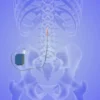Roughly 50 million adults suffer from chronic pain, according to data from the CDC, including pain that interferes with regular activities like work, socializing, and even sleep. While some types of pain can be relieved with medication, physical therapy, and other conservative options, many people find these methods aren’t enough to give them the relief they need.
At Advanced Spine and Pain Center, our team offers state-of-the-art spinal cord stimulation to help manage chronic pain that doesn’t respond to other therapies. Here, learn how this advanced therapy works and whether it’s a good choice for you.
How spinal cord stimulation works
Extending from the base of your skull down to your “tailbone,” your spinal column is a conduit for all your nerves. Those nerves exit your spine at joints where each pair of spine bones (vertebrae) meet, then travel to every other part of your body, where they provide sensation and help control various critical functions.
Some of those nerves also control pain sensations, carrying chemical “pain signals” to and from your brain. When one of these nerves is irritated, inflamed, or damaged in some way, that signaling process is disrupted, and you can wind up with an abnormal pain response anywhere along the path of that nerve.
Many pain signals initiate at the site of an injury, but some nerves can become overstimulated and “stuck” in the “on” position. This is what researchers think happens to people with pain syndromes like fibromyalgia or chronic regional pain syndrome (CRPS). These pain syndromes cause discomfort even when you don’t have an injury or other identifiable pain stimulus.
Spinal cord stimulation “disrupts the disruption” by blocking abnormal pain signals and preventing them from reaching your brain. Stimulation is achieved through a small, implantable device that emits tiny electrical signals that interfere with nerve chemical transport.
Spinal cord stimulation: Personal considerations
Spinal cord stimulation provides long-term, effective pain relief for people with a wide array of pain problems and syndromes, including:
- Complex regional pain syndrome
- Degenerative disc disease
- Chronic sciatica
- Peripheral neuropathy
- Shingles-related pain (postherpetic neuralgia)
- Phantom limb pain
- Chronic neck pain or back pain
- Spinal membrane inflammation (arachnoiditis)
Plus, it’s a good choice for anyone who can’t find pain relief with more conservative options, like medication or physical therapy.
Taking a test drive
The best way to decide if spinal cord stimulation is right for you is to have a test drive before the device is permanently implanted. These trial runs are a regular part of treatment, ensuring the stimulator will provide you with the level of pain relief you’re looking for.
Our team implants tiny electrical leads into the space surrounding your spinal cord. The leads are connected to a small device you control during your trial run. The testing period lasts a week, allowing you and your doctor to assess its effectiveness.
If your trial run is successful, we implant the device near your belly or buttocks and attach the leads to the area near your spine. We use a special X-ray to ensure the device and leads are properly placed during implantation. Afterward, you learn how to use the device to adjust your level of pain relief. Complete recovery takes about 10-14 days.
Learn more about spinal cord stimulation
Spinal cord stimulation can play an important role in relieving hard-to-manage pain that doesn’t respond to more conservative treatment options. To learn more about this state-of-the-art therapy and to find out if it’s right for you, book an appointment online or over the phone with the team at our three locations in San Antonio, Texas, today.





